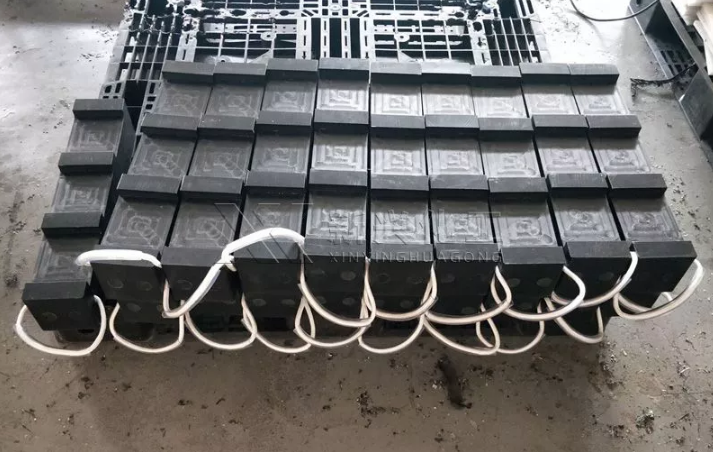Choosing the right cribbing blocks is essential for ensuring safety and efficiency in various industrial applications. Whether you're in construction, automotive work, or emergency services, the decision between wood and plastic cribbing blocks can significantly impact your operations. This article delves into the differences between these two popular materials, helping you determine which is best suited for your needs.
Cribbing blocks are solid pieces of material used to stabilize and support heavy objects during lifting or other operations. These blocks are commonly employed in scenarios where maintaining stability is crucial, such as in construction, rescue operations, and heavy machinery maintenance.
Wood cribbing blocks are traditional and widely used in many industries. They are typically made from hardwoods like oak or maple, known for their strength and durability.
Advantages of Wood Cribbing Blocks
- Cost-Effective: Wood cribbing blocks are often less expensive upfront than plastic options.
- High Strength: Wood can bear significant loads and is reliable under heavy pressure.
- Natural Material: Being a natural material, wood is biodegradable and has a lower environmental impact if sourced sustainably.
Disadvantages of Wood Cribbing Blocks
- Susceptibility to Weather: Wood can absorb moisture, leading to rot or weakening over time.
- Maintenance: Wood requires regular inspections and maintenance to prevent damage from environmental factors.
- Inconsistency: Natural variations in wood can lead to inconsistencies in performance.
Plastic cribbing blocks are a modern alternative, often made from high-density polyethylene (HDPE) or similar materials. These blocks are designed to offer consistent performance and durability.
Advantages of Plastic Cribbing Blocks
- Durability: Plastic blocks are resistant to rot, moisture, and chemicals, making them more durable in harsh environments.
- Consistency: Manufactured to precise standards, plastic cribbing blocks provide uniform performance.
- Lightweight: Plastic is generally lighter than wood, making these blocks easier to handle and transport.
Disadvantages of Plastic Cribbing Blocks
- Higher Initial Cost: Plastic cribbing blocks can be more expensive initially compared to wood.
- Environmental Concerns: Although durable, plastic has a higher environmental footprint and poses challenges in disposal and recycling.

When comparing durability, plastic cribbing blocks generally outperform wood. They resist moisture, rot, and insect damage, which can compromise wood over time. However, wood cribbing blocks, especially when well-maintained, can also last a long time and offer reliable performance.
Safety is paramount when using cribbing blocks. Plastic blocks often have higher load-bearing capacities and are designed to resist slipping and crushing. Wood blocks can be safe but require more frequent inspection to ensure they remain in good condition.
Wood cribbing blocks tend to be cheaper upfront, but their maintenance costs can add up over time. Plastic cribbing blocks, while more expensive initially, often prove to be more cost-effective in the long run due to their durability and lower maintenance needs.
Wood cribbing blocks require regular maintenance, including inspections for cracks, rot, and other damage. Plastic cribbing blocks are easier to maintain, needing only occasional cleaning to remove dirt and debris.
Plastic cribbing blocks are generally lighter than wood, making them easier to carry and position. This is especially important in industries where quick, efficient setup is necessary.
Wood cribbing blocks are often preferred in industries where cost is a significant factor, such as construction. Plastic blocks are favored in environments where durability and ease of handling are paramount, such as in emergency services or industrial settings.
Plastic cribbing blocks excel in extreme conditions, resisting moisture, chemicals, and temperature fluctuations. Wood blocks, while robust, can suffer in wet or highly variable environments.
In the debate between wood and plastic cribbing blocks, the best choice depends on your specific needs. If you prioritize cost and natural materials, wood is a solid option. However, if durability, low maintenance, and performance in extreme conditions are your primary concerns, plastic cribbing blocks are likely the better choice. For more information on selecting the right cribbing blocks, or to place an order, feel free to contact us. We are a reliable supplier of high-quality cribbing blocks, ready to meet your needs.
1. What is the average lifespan of wood vs. plastic cribbing blocks?
- Wood cribbing blocks can last several years with proper maintenance, while plastic blocks typically last longer due to their resistance to environmental factors.
2. Can plastic cribbing blocks be recycled?
- Yes, many plastic cribbing blocks can be recycled, but it depends on the specific material and local recycling facilities.
3. Which material is safer for heavy-duty applications?
- Plastic cribbing blocks are generally considered safer for heavy-duty applications due to their higher load-bearing capacity and resistance to crushing.
4. How do environmental conditions affect the performance of cribbing blocks?
- Wood can degrade in wet or extreme conditions, while plastic maintains its integrity in a wide range of environments.
5. Where can I find a reliable supplier for cribbing blocks?
- You can contact us directly for a trusted supplier of both wood and plastic cribbing blocks tailored to your specific needs.
Established in 1989,located in Qingdao city of Shandong province, Shandong Ningjin Xinxing Chemical Co.,LTD. is the most professional manufacture of engineering plastics and the only manufacturer who has complete MATS system in China.
Phone
+86 189 0640 6469
Location
Liaohe Road, Ningjin Industrial Zone, Dezhou City, Shandong Province, China.
Copyright © Shandong Ningjin Xinxing Chemical Co., Ltd. All Rights Reserved |
Sitemap
| Powered by 